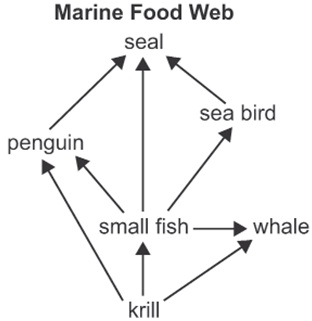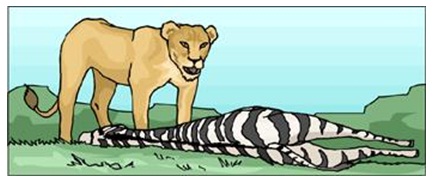Use the table below to answer the question:

Student’s Observations of a Pond Ecosystem
Question 1: A group of students measured a ten-square-meter section of a pond ecosystem and recorded observations. Which statement is a testable hypothesis?
a) The frogs living in the pond represent a population.
b) Water is an abiotic component in the pond ecosystem.
c) If the fish are given more food, then they will be happier.
d) If the frogs are startled, then they will jump into the water.
Use the list shown below to answer the following question:
Observations:
a) two grey wolves
b) five moose
c) several species of conifer trees
d) large granite rock
e) shallow pond
Question 2: A student wrote several observations in a field notebook. Which term best classifies all of the student’s observations?
a) Population
b) Food chain
c) Ecosystem
d) Community
Question 3: A researcher observing an ecosystem explains the amount of sunlight, precipitation and kind of soil present. Which factors is the researcher most likely explaining?
a) biotic factors in a forest
b) biotic factors in a tundra
c) abiotic factors in a prairie
d) abiotic factors in an ocean
Question 4: A species of snapping turtles has a tongue which resembles a worm. The tongue is used to attract the small fish. Which best explains the interaction between the fish and the snapping turtle?
a) predation
b) symbiosis
c) parasitism
d) competition
Question 5: Which statement correctly explains how nitrogen in the soil returns to atmosphere?
a) Soil bacteria transform nitrates into nitrogen gas.
b) Decomposers directly transform ammonium into nitrogen gas.
c) Plants assimilate nitrites and transform them into nitrogen gas.
d) Nitrogen-fixing bacteria in plant roots transform nitrates into nitrogen gas.
Use the diagram below to answer the given question:

Question 6: Which sequence correctly explains the flow of energy between organisms in the marine food web?
a) from seals to penguins to krill
b) from whales to krill to small fish
c) from sea birds to seals to penguins
d) from small fish to penguins to seals
Question 7: Agricultural runoff can carry fertilizers into lakes and streams. This runoff can cause algae populations to greatly increase. Which effect does this change in the algae population sizes most likely have on influenced lakes and streams?
a) an increase in water level
b) an increase in water clarity
c) a reduction in dissolved oxygen required by fish and shellfish
d) a reduction in temperature variations close to the water’s surface
Question 8: A farmer observed that a raise in a field’s soil nitrogen content was followed by a raise in producer productivity. What does this observation most likely point out about the relationship between nitrogen and the producers in the field?
a) Nitrogen was a biotic factor.
b) Nitrogen was a limiting factor.
c) Nitrogen became a surplus resource.
d) Nitrogen became a selection pressure.
Question 9: What interaction is shown between the lion and the zebra in the picture above?

a) Predator/prey
b) parasite/host
c) consumer/decomposer
d) consumer/producer
Question 10: Mute Swans are one of the heaviest flying birds and consume up to 8 pounds of vegetation each day. How will the migration of Mute Swans into an area most likely affect the birds native to that area?
a) The native birds and Mute Swans will coexist peacefully altogether.
b) The native birds will instantly migrate to the other area.
c) The native birds will reduce in number as there is not enough food for all the birds.
d) The native birds will adapt to consume less food or various types of food.